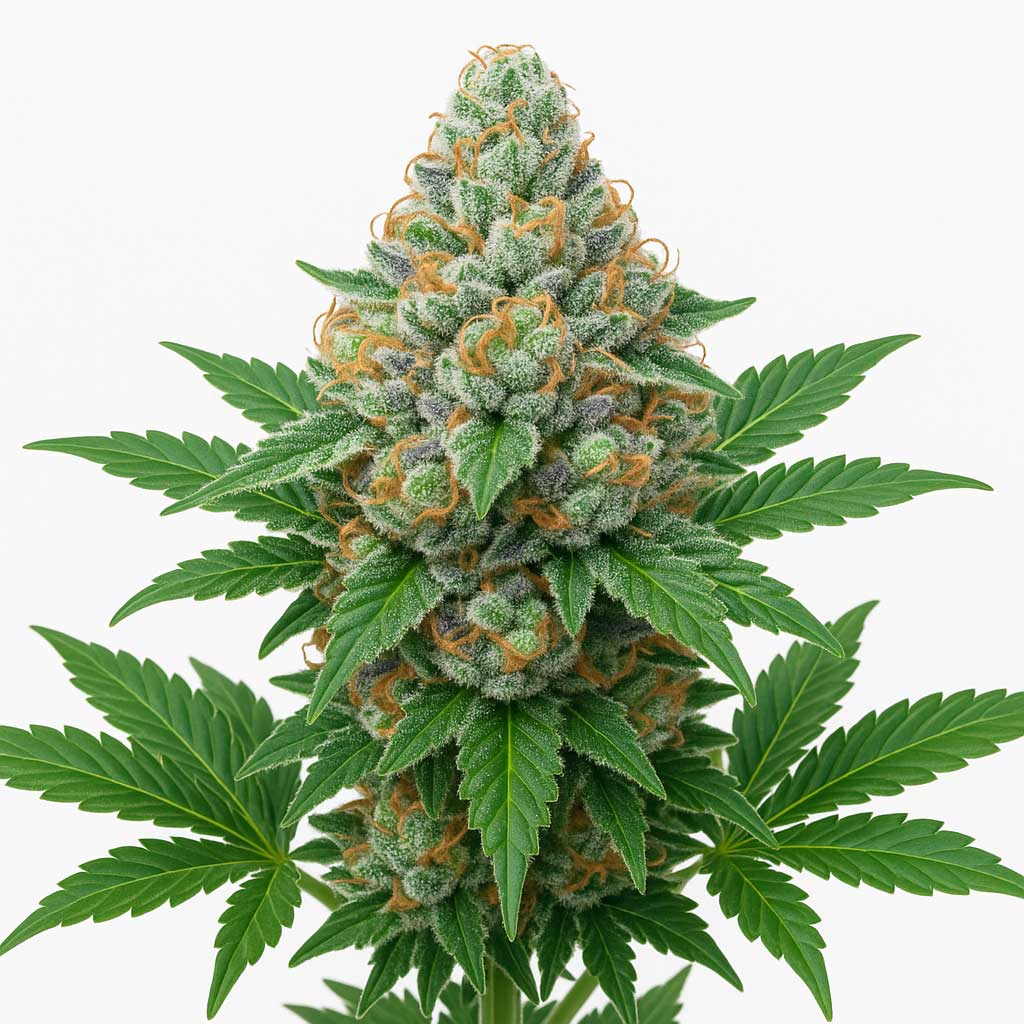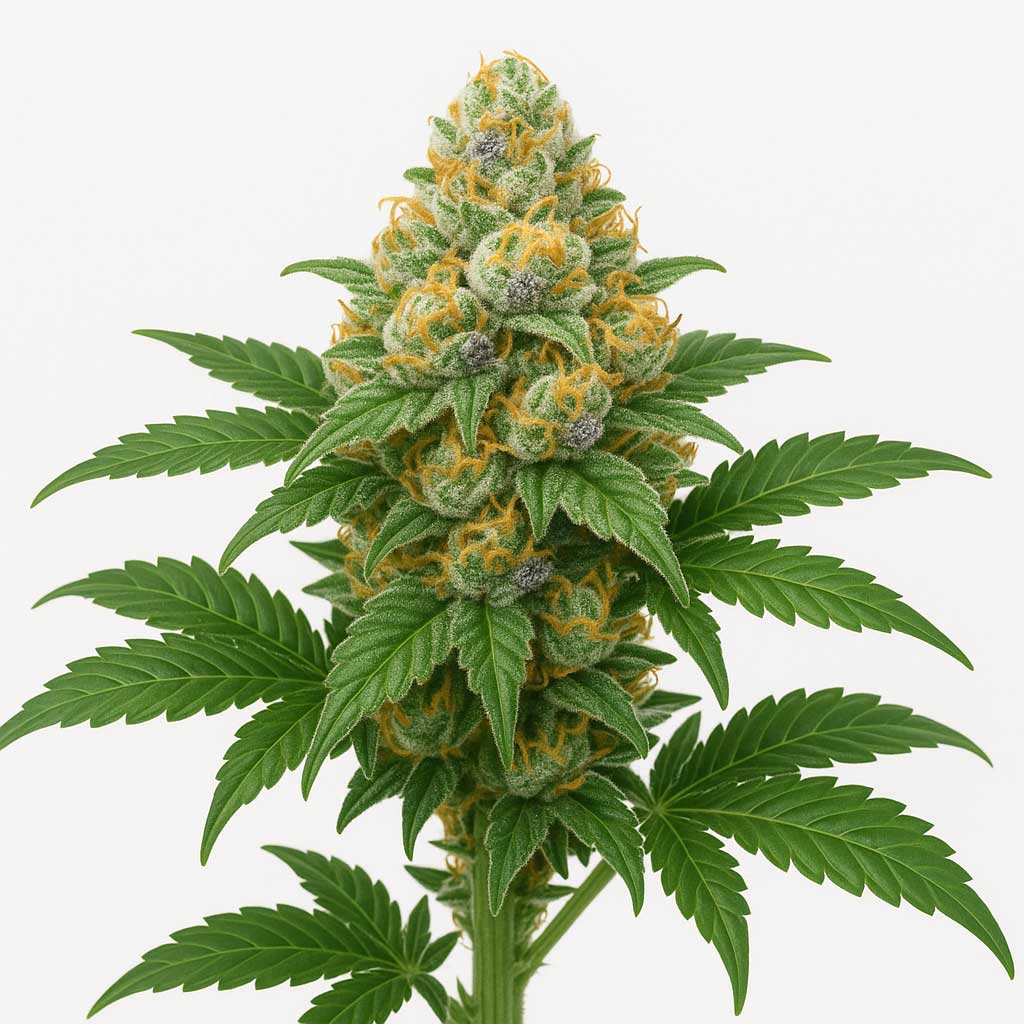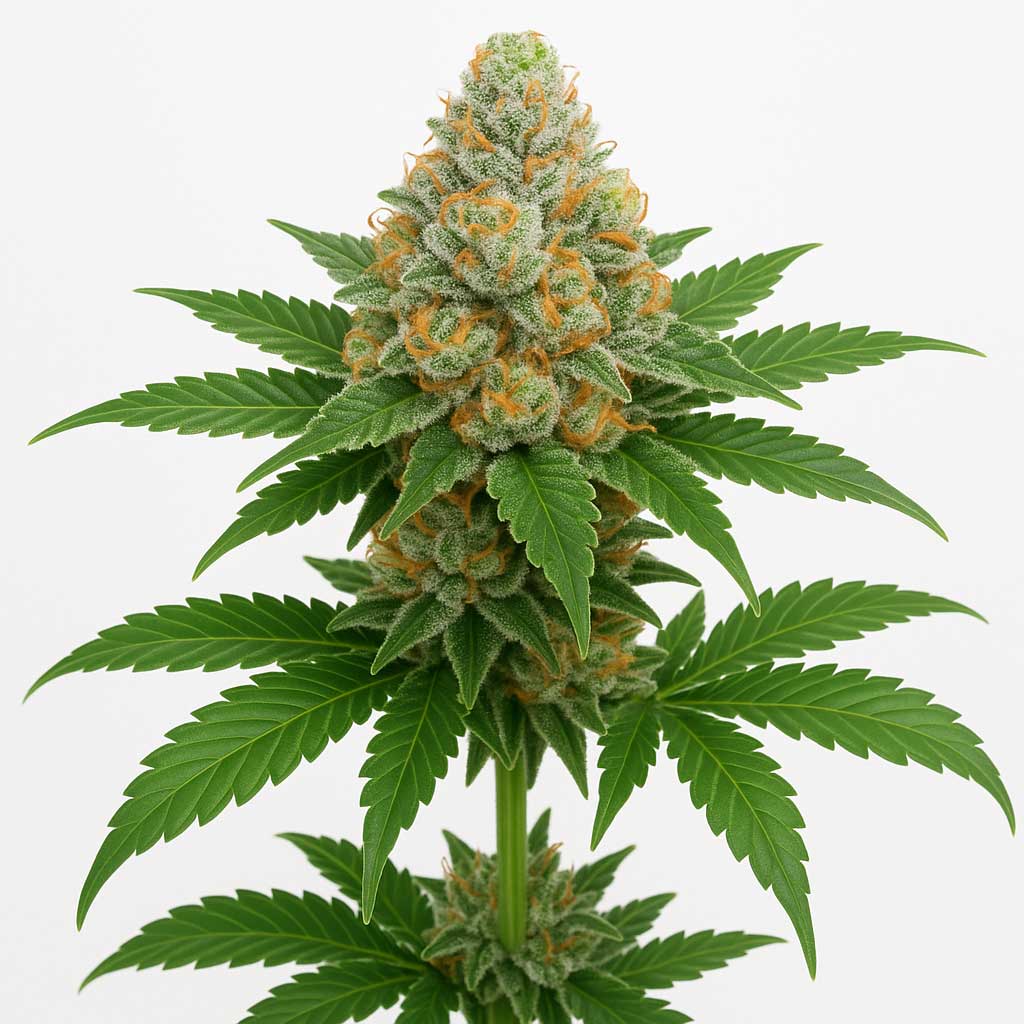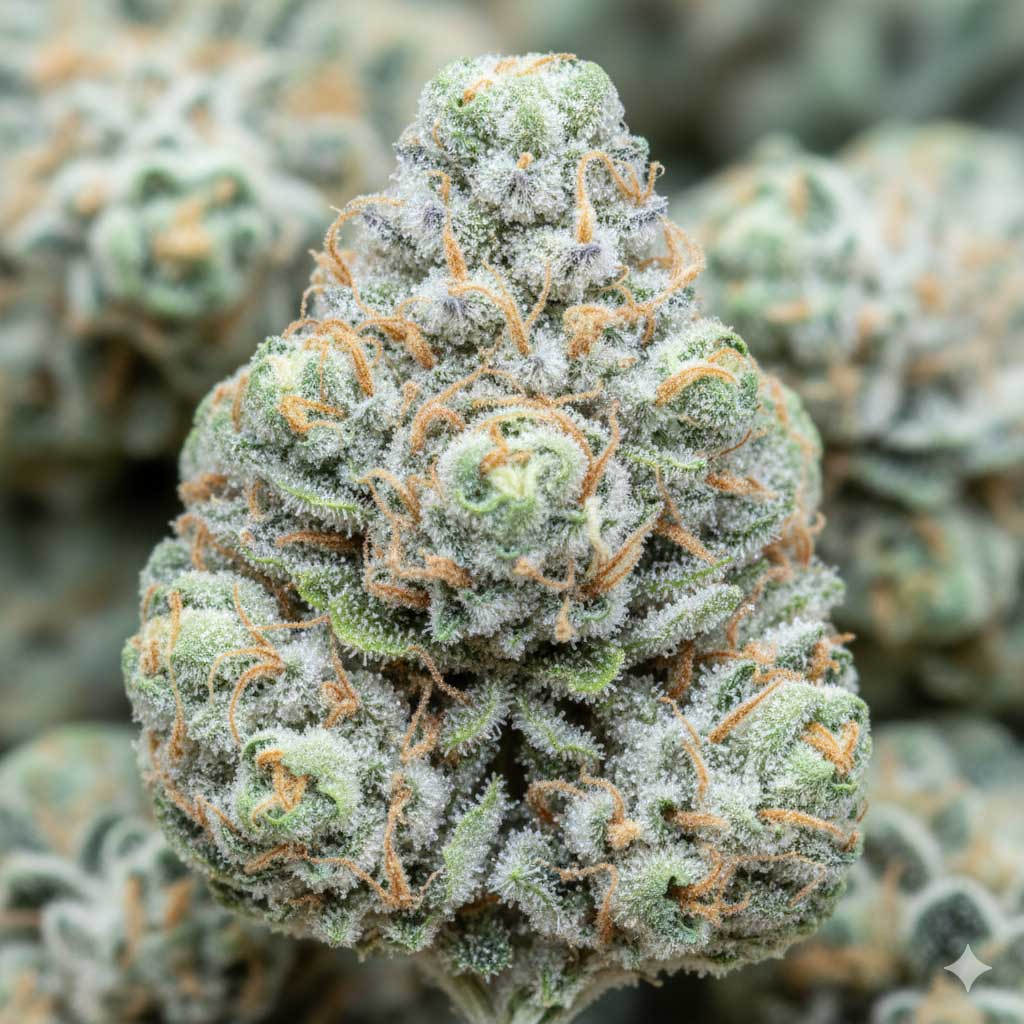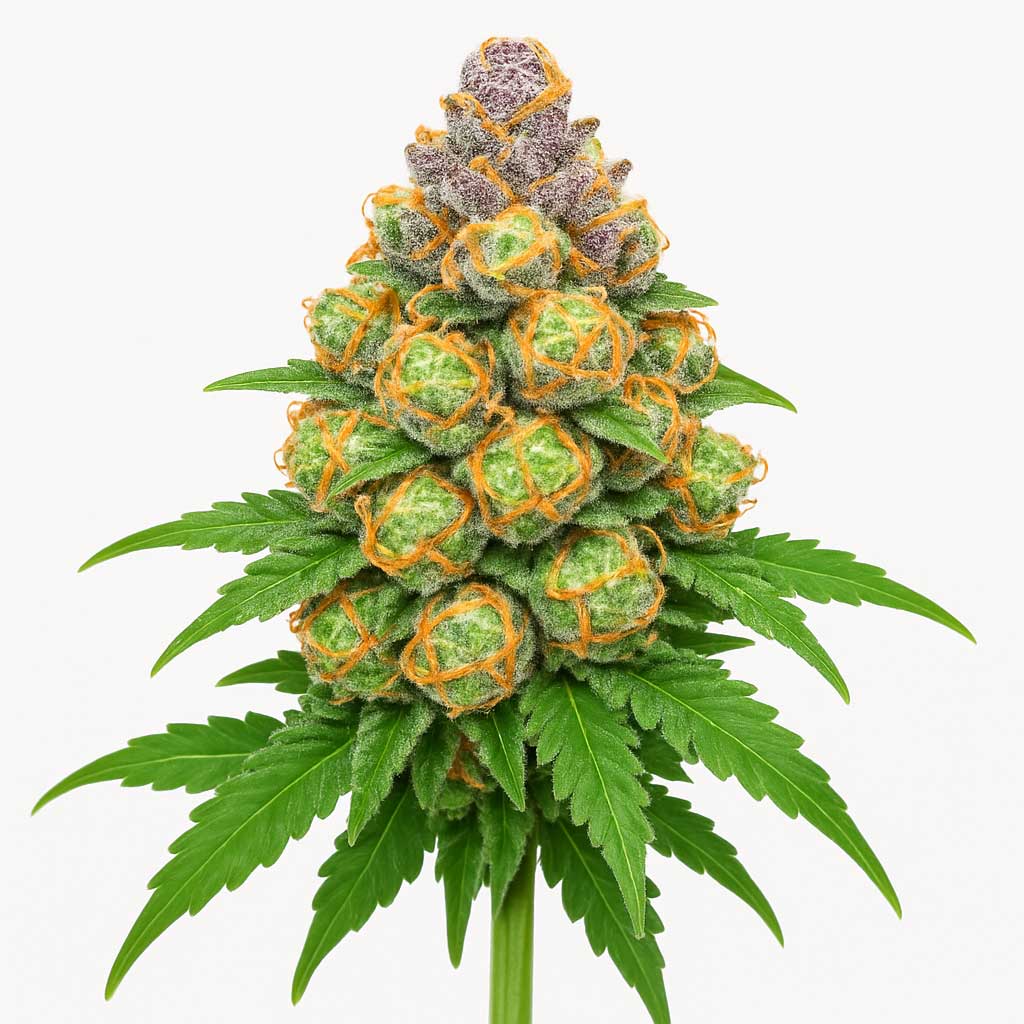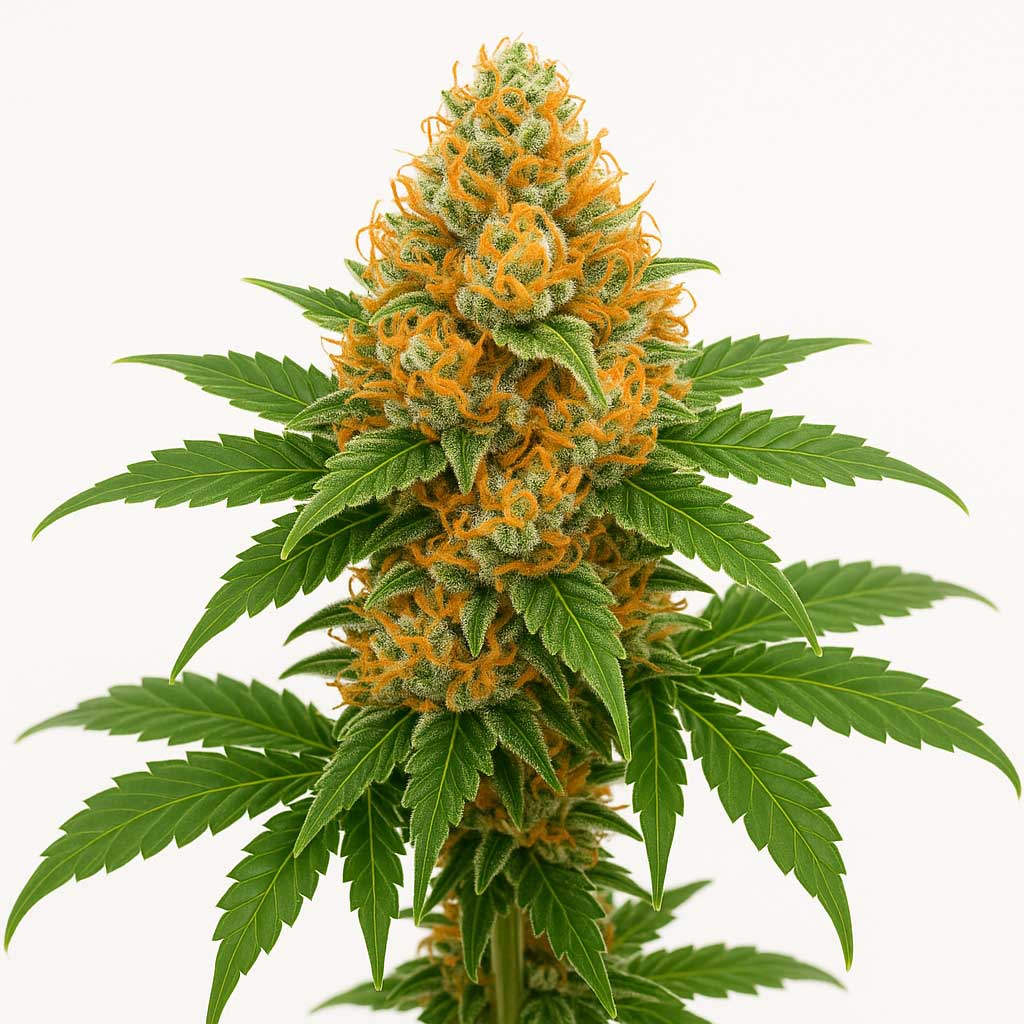Mint Candy (Cannabis Strain) — Strainpedia
Mint Candy is a highly aromatic Balanced Hybrid cultivar derived from a cross between Runtz x SinMint Cookies. Recognized for its dense, vibrant buds and a unique flavor profile combining sweet candy, earthy dough, and sharp mint, it is frequently referenced in horticultural education for its potent, well-rounded effects and high resin production. The information below is intended strictly for scientific and botanical reference.
Quick Facts
| Genetics | Runtz x SinMint Cookies |
|---|---|
| Variety | Balanced Hybrid (approx. 50% Indica / 50% Sativa) |
| Flowering Time | 8–9 weeks (56–63 days indoors) |
| Yield Potential | 450–600 g/m² (Moderate to High) |
| Plant Height | 90–120 cm; moderate, manageable stretch; bushy structure |
| Climate Preference | Temperate–Controlled Indoor (Stable environment needed for optimal flavor) |
| Difficulty | Intermediate (Requires attention to nutrient schedule and canopy management) |
Scientific & Botanical Overview
Mint Candy plants develop a compact, bushy structure with dense, medium-sized buds that are often heavily layered in resin. The coloration is visually appealing, typically featuring light greens, subtle purple streaks, and bright orange pistils, all coated in a glittering frost of trichomes. This cultivar has a strong tendency to finish quickly, typically within 8 to 9 weeks, making it an efficient option for indoor cycles. Its rapid resin development contributes to its potent effects and excellent suitability for extracts.
Effects & Use-Cases (Reported)
- Commonly reported effects: euphoric, mentally uplifting, focused, and deeply physically relaxing; a balanced high that avoids heavy sedation.
- Use-case context: highly versatile; suitable for mood elevation and social use in the afternoon, or for deep relaxation and stress relief in the evening.
- Note: These are observational reports, not medical claims; outcomes are not guaranteed.
Aroma & Flavors
- Aroma: intensely sweet and creamy (from Runtz), layered with a pungent, earthy cookie dough base, and a distinct sharp mint or menthol finish.
- Flavor: a smooth, dessert-like experience, featuring sweet vanilla and candy on the inhale, followed by a crisp, cooling mint and earthy, spicy exhale.
- Terpene associations: caryophyllene (suggested dominant), limonene, myrcene, pinene (menthol notes).
Tested Cannabinoid & Terpene Ranges
| Compound | Typical Range* | Notes |
|---|---|---|
| Δ⁹-THC | ~20–25% (reported up to 28%+) | Known for high potency; suitable for intermediate to experienced users. |
| CBD | ~0–1% | Generally present at low, trace levels. |
| Caryophyllene | Not quantified | Implied component; contributes to the spice/pepper and earthy notes. |
| Limonene | Not quantified | Implied component; contributes to the sweet/citrus notes and cerebral lift. |
| Myrcene | Not quantified | Implied component; contributes to the earthy base and physical relaxation. |
| Pinene | Not quantified | Implied component; associated with the cooling, minty notes. |
*Ranges are literature- and lab-report-informed references and can differ with environment, harvest timing, post-harvest handling, and analytical methods.
Cultivation Notes
- Light Cycle: 18/6 vegetative; 12/12 flowering
- Humidity Targets: 40–50% during flower; needs excellent airflow to manage the dense bud structure and high resin content.
- Nutrition: Moderate to heavy feeder; benefits from consistent nutrient delivery; responsive to a bloom boost for maximum density.
- Training: Topping and LST (Low-Stress Training) are highly recommended to promote an even canopy and maximize light exposure to all flowering sites.
- Harvest Window: Late September to early October outdoors (Northern Hemisphere), due to its quick finish time.
Grower Notes (Week-by-Week Snapshot)
- Weeks 1–2 (Transition/Stretch): moderate stretch; establish final structure with LST; manage nutrient solution for transition.
- Weeks 3–4: dense flower set; perform light defoliation to clear interior bud sites; monitor for signs of nutrient deficiencies.
- Weeks 5–6: rapid bulking and resin production; aroma intensifies; maintain stable environment and temperature.
- Weeks 7–9: ripening phase; initiate final flush; harvest based on trichome maturity (aim for a high percentage of milky trichomes for full effect).
- Post-Harvest: Dry 18–20 °C, 55–60% RH for optimal preservation of minty terpenes.
Timelines shift with genotype and environment; prioritize plant health markers and trichome maturity over calendar counts.
Genetic Lineage
Mint Candy is generally understood to be a cross utilizing the famous, sweet, and potent Runtz genetics alongside SinMint Cookies (a derivative of the Girl Scout Cookies lineage). This hybrid was specifically bred to capture the sweet, candy-like essence of Runtz while adding a potent, earthy, and distinctly minty complexity and density from the Cookies lineage, resulting in a highly flavorful and potent modern hybrid.
Research Insights
The balanced effects reported for Mint Candy are likely the result of a diverse terpene profile, which may include pinene (contributing the sharp, minty notes) alongside limonene (uplifting) and myrcene (relaxing). This combination of terpenes, working in concert with high THC, exemplifies a highly effective entourage effect that provides both mental stimulation and physical relief without the overbearing sedation of a heavy Indica.
Frequently Asked Questions
Is Mint Candy an Indica or Sativa?
Mint Candy is classified as a Balanced Hybrid, offering a versatile experience that combines cerebral euphoria and mental uplift with deep physical relaxation.
What does Mint Candy smell and taste like?
It carries a prominent aroma of sweet candy and creamy cookie dough, finished with a distinct, sharp mint or menthol note. The flavor is sweet and cooling.
What are the typical effects?
Reported effects are intensely euphoric, focused, and mentally stimulating, followed by a comfortable, full-body calm.
How long does Mint Candy take to flower?
Mint Candy typically flowers in 8–9 weeks (56–63 days) indoors.
Is it suitable for beginners?
Mint Candy is considered Intermediate in difficulty. It benefits significantly from training to manage its structure and requires careful attention to nutrient intake during the rapid flowering phase.
Educational Disclaimer: This page is provided for scientific and horticultural reference only and does not constitute medical or promotional advice. Cannabis cultivation, possession, and use are regulated by local laws. Always comply with applicable legislation in your region.

